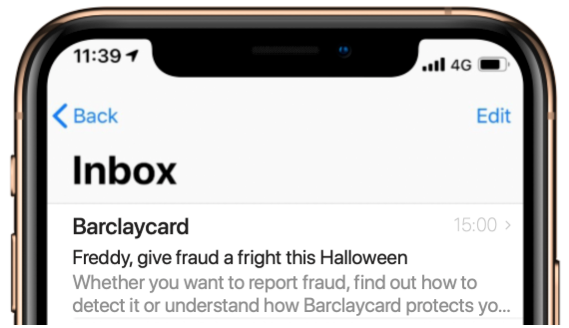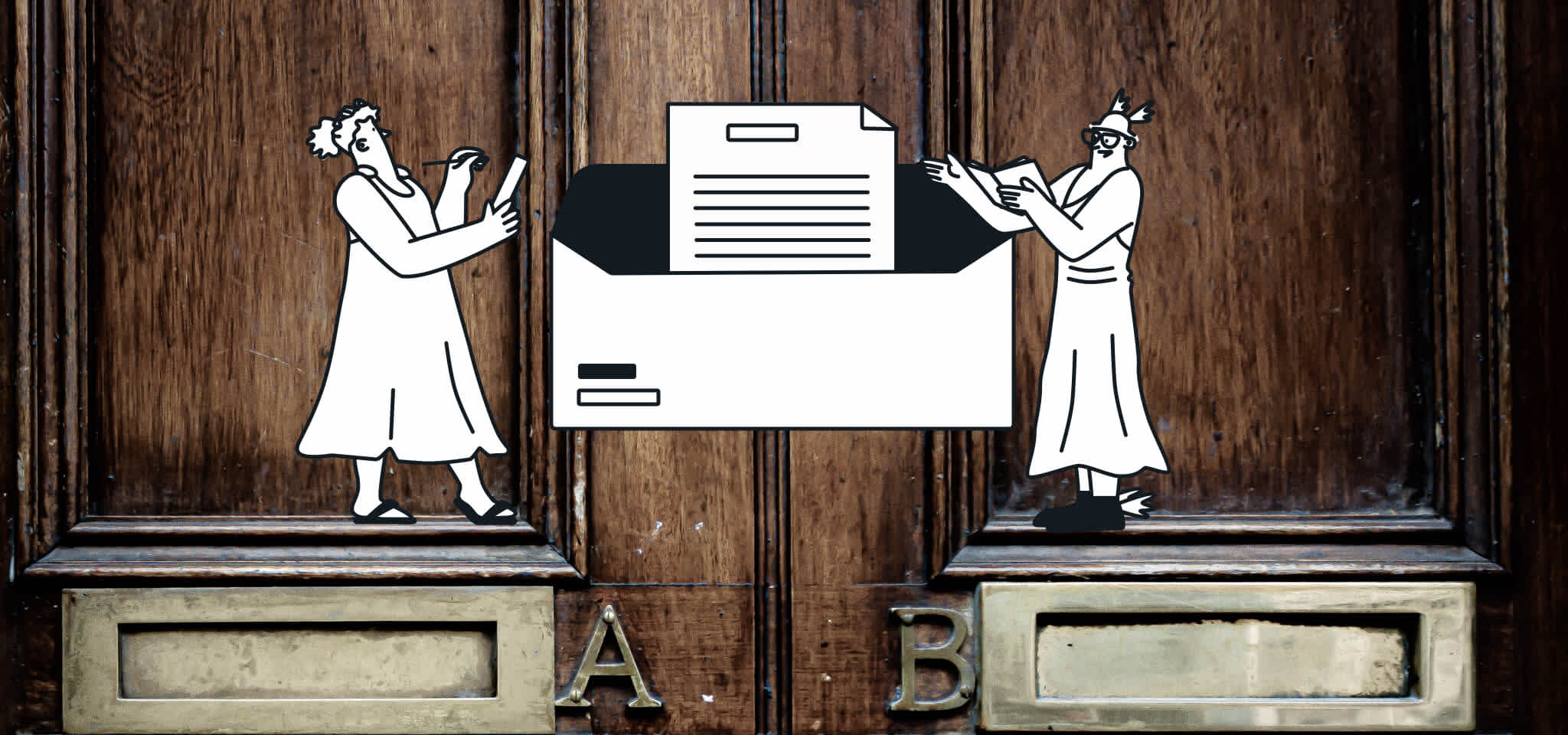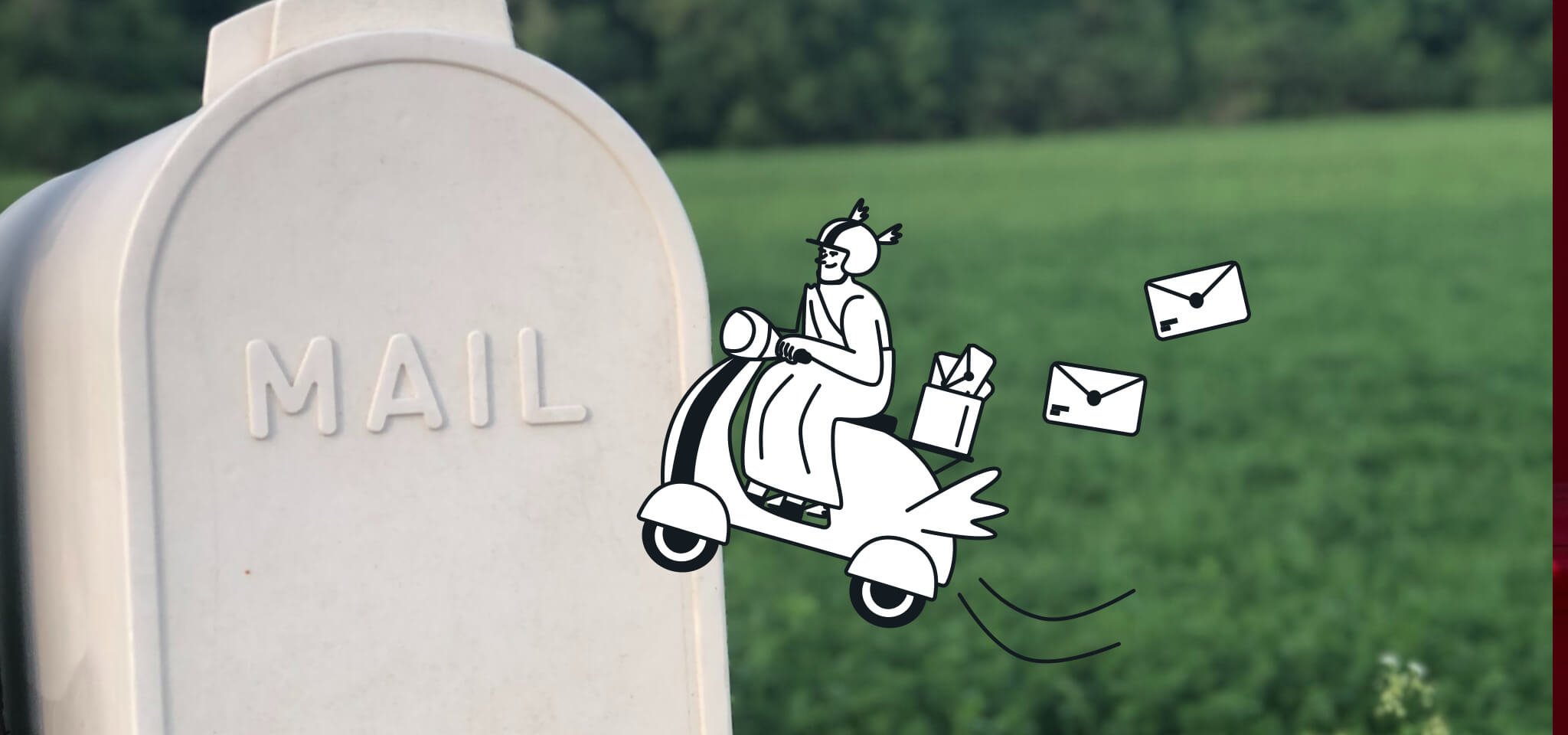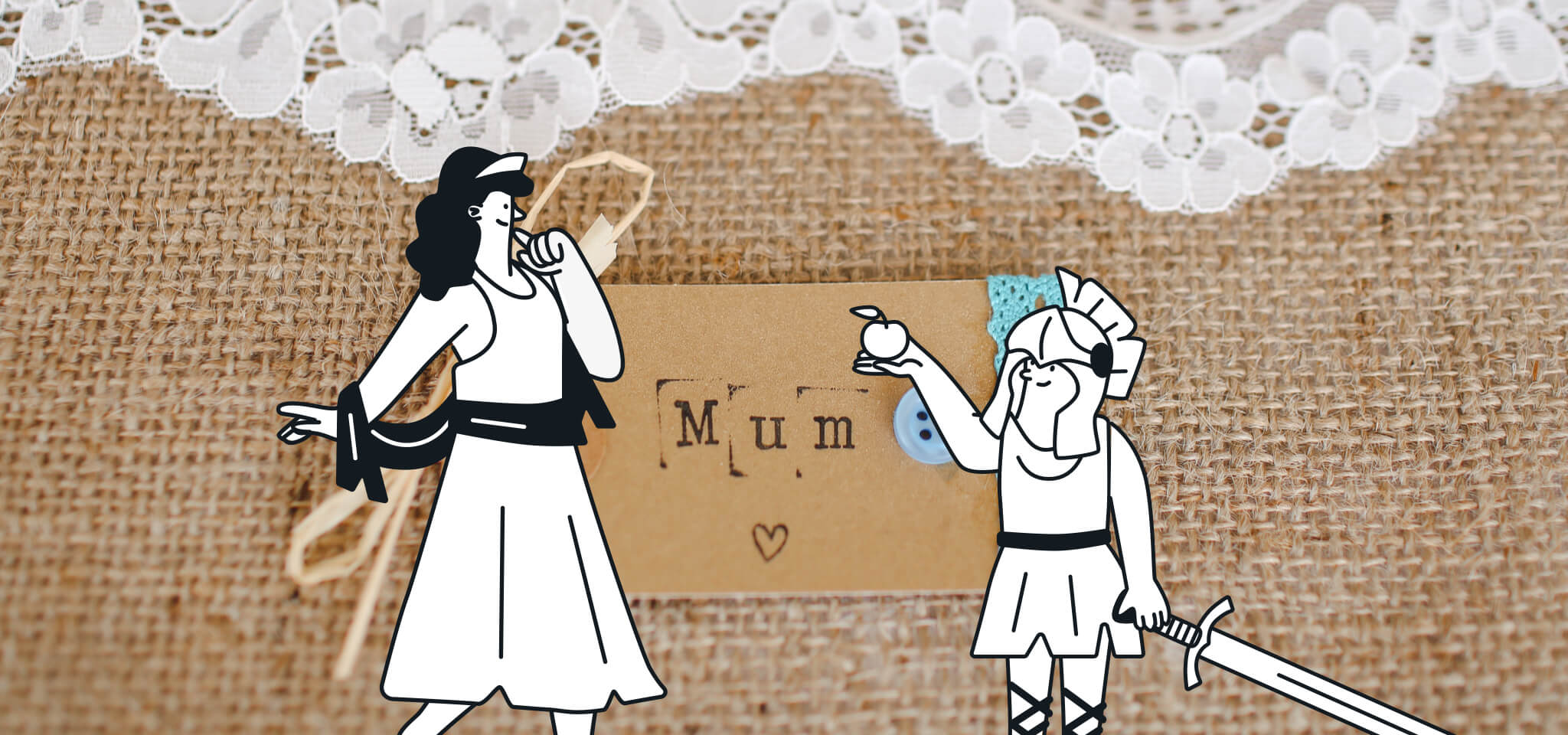Email best practices
66+ email subject lines that beg to be opened
Top tips from experts on how to write email subject lines that work. Learn more now.

PUBLISHED ON
We all know how important headlines are in advertising copy, right? Well, subject lines are like the headlines for your emails; the gateway to your campaign. This means the ability to consistently write effective subject lines will result in higher open rates and more engagement.
As iconic copywriter David Ogilvy said, “On average, 5x as many people read the headline as read the body copy. When you have written your headline, you have spent eighty cents out of your dollar.”
This is especially true for email, because when scrolling through an inbox display all people see is the subject line, the sender, and the pre-header. That’s what subscribers have to go off when deciding to open your email, or not.
Learning how to write effective email subject lines should be a top priority for anyone in charge of an email marketing campaign. Here, we’ll cherry-pick the words, combinations, and formatting of different subject lines to help you write copy that generates more opens, engagement, and revenue.
Table of contents
1. Pay close attention to length
2. Don’t forget the preheader
3. Lean into segmentation and automation
4. Focus on tone and voice
5. Consider using symbols and emojis
6. Always test your email subject lines
FOMO/Urgency:
Wordplay:
Pain point:
Curiosity:
Emojis:
Length
Personalization
Negative statements, questions, and exclamations
Vague / Straightforward
Discounts & Urgency
The inbox is a noisy and crowded place, and the fight for your subscribers’ attention is fierce. You have around 60 characters to capture their attention in the subject line.
Quite simply, a good email subject line is one that gets a subscriber to open an email because they actually want to. That means no deception or false promises from your end.
Subject lines are not meant, in most cases, to convey the entire point of the email. The goal is usually very specific – get it opened. Once that’s done, the rest of the email can engage the reader and motivate some form of response or engagement.
How to create email subject lines that don’t suck
Sounds like a good starting point, right? Remember – your subject line must give the reader a reason to open the email. That reason could be logical or emotional. In most cases, an emotional reason is better, because it activates their brain on a psychological level.
But especially in certain automation situations – such as a welcome email– or when sending something the reader asked for, be explicit about it in the subject line – “The ebook you asked for.”
As for emotion, what sorts of tools can you use to tap into the reader’s emotions and make them want to open your emails? Here are a few of the most tried and tested:
Curiosity: Give them an itch they can only scratch by opening the email.
FOMO (fear of missing out): Make your reader feel like they simply can’t miss whatever is in your email.
Pain points: Touch on feelings, topics, and issues relevant and important to your audience.
Emojis: Draw attention to your email in a crowded inbox and visually align with your brand’s tone.
Wordplay: Use a catchy pun to get a reaction.
Here’s an example of an email subject using curiosity:

Our thoughts are officially provoked.
It creates questions that beg to be answered. Who made this album? Why did she never make one like it again? It sounds unique and makes us want to know more.
This email subject from Vidyard uses wordplay that aligns with their service, but also touches on curiosity and a pain point relevant to their audience.

We see what you did there, Vidyard.
Their audience uses video as part of their marketing – otherwise why would they subscribe to Vidyard? But how well is that strategy working? This subject line promises to deliver ways to improve it.
Understand your audience
While it can be helpful to look at examples of email subject lines, what’s meaningful and relevant to your audience may differ from what other companies and brands are doing.
More than anything else, your email subjects must connect with your audience. Whether you do that with brand personality, humor, pain points, curiosity, or other methods, it must resonate with the readers subscribed to your email list.
This is why email testing is so important. But you should also be paying attention to past email subject line metrics. Which kinds of email subjects seem to get the most opens and clicks? Which ones lead to more sales, signups, and other sorts of conversions?
Your marketing is not about you. It’s about them.
For example, in some industries, coupons and discounts get people really excited. But in others, frequent sales are actually a turn-off. Not every company is trying to appeal to bargain hunters. What does your audience respond to? Why do they want to be on your email list? What are they hoping to get out of it?
Top tips for killer email subject lines
When it comes to constructing your subject line, there are a few things to keep in mind to increase your chances of success:
1. Pay close attention to length
A shorter subject line may be more likely to catch the reader’s attention, but it still must be reflective of the content inside.
You should be aware of each email client’s subject line preview length. For example, Gmail only shows the first 70 characters, where Hotmail / Live and Yahoo Mail show 60 and 46 characters respectively. Do some research on different mobile clients to find out the current limits.
2. Don’t forget the preheader
While distinct from the subject line, the email pre-header goes together in forming a perfect inbox preview to maximize opens. It complements the subject line and gives you more room to deliver your message in their inbox.
This is another place you can use emojis, too.
3. Lean into segmentation and automation
For email automation and messages subscribers are expecting to receive, be as direct as possible. For example, if someone requests a copy of a special report, signs up to your email list, or purchases a product – put information in your subject line that directly connects their previous action to the email they just got. This is where curiosity and cleverness aren’t appropriate.
If someone signed up for a webinar, “Your upcoming webinar details” is all you need for the subject line for the follow-up automated email.
With segmentation, it’s a little different, because it depends on the nature of the segment you’re emailing. If it’s an interest-based segment, include something in the subject that calls out that interest.
Other segmentation could be demographic. If you’re emailing a segment comprised of young parents, put something in the subject that they will recognize as being for them, such as:
“Kids unraveling again?” Try this…
Get your child ready to excel this fall
Birthday party favors that won’t embarrass your kid
Segmentation can also be based on past behaviors, such as downloads, engagement, shares, surveys, purchases, or event attendance. Addressing these in subject lines can be difficult and isn’t always necessary. But when you can do it, you will likely get higher open rates.
4. Focus on tone and voice
Positive or negative, questions or exclamations, vague or direct sentences, FOMO, urgency... There are many ways we can communicate one idea. Playing around with different options will keep your emails fresh and enticing. Whichever strategy you use, don’t use it with every email or your approach will get stale. You can’t have a “greatest sale of the century” every week.
Also, your subject line (and your content) should be aligned with your brand voice and tone. Having a recognizable style will go a long way.
Here are some examples of email subject lines infused with the personality of their brand.

Forget the bonuses; just give us biscuits.

You have our attention, Dan.
5. Consider using symbols and emojis
Do emojis work? Which one's the best? We did a ton of research on the impact of emojis in email subject lines to find out.
Marketers have been using emojis for a while now but be careful; they’re not compatible with all email clients. Also, they should always be used in context, otherwise it can have a negative impact on your brand image.
6. Always test your email subject lines
Lastly, always run an A/B test. No one knows for certain which subject line will work best, so set up an ‘A/B test’ to try out up to ten different subject lines. For example, you might want to send your campaigns on Tuesday at noon with an A/B test in place and let it run for 20 hours, and then have the winning subject line and email be sent early on Wednesday morning so it’ll be one of the first in your email recipients’ inbox when they get to work.
After A/B testing and sending a couple of campaigns, see which ones worked best from your data set and look to adjust accordingly. By comparing your results with industry benchmarks, you can always have specific goals to focus on and improve your email campaigns over time.
Pro Tip: The larger your email list, the more variables you can accurately measure. Technically, an A/B test only tests one variable. A multivariate test explores more than one, such as multiple subject lines, preview text, opening sentences, images, call to action language, and email designs.
66 email subject lines that get opened
Here are some of the best email subject lines, broken down into some of the categories we’ve been discussing.
FOMO/Urgency:
Fear Of Missing Out is a thing. It’s the psychological principle that rules social media: people want to know what other people know, and what other people are talking about. Are you leveraging your contacts’ FOMO with subject lines they just can’t resist?
To an extent, the basis of clickbait subject lines is precisely this overwhelming curiosity that pushes us to open a message. We want to find out if, in fact, “there’s no way I can imagine what this person said”. Clickbait has developed a negative perception, and that’s because too often, the “clickbait” turns out to be a sham and doesn’t pay off on what the headline promised.
From Name | Subject Line |
|---|---|
From Name | |
LOFT | What’s new, what’s hot and what’s about to sell out |
Subject Line | |
Salomon | Don’t forget to add your Salomon Pass! |
Kiehl | Not part of Kiehl’s Rewards yet? |
Gap | Final Hours: Free Shipping + Sales |
Lowe’s | Last chance to save 20% |
H&M | Your discount is about to expire |
Matt from Gear Patrol | Mystery Sale – TODAY only! |
HelloFresh | Get $6.16 Dinners When You Come Back, Fam! |
Sprouts | You’ve missed over 30 different snacks! |
Tim Ferriss | Your freebie is waiting |
Demarcus Childs | Aita’s amazing journey – you have to see this video |
Hannah Eve | Did you see this, Dustin? |
Bass Pro Shops | Final Hours to Take Up to 50% Off During Our Friends & Family Sale |
Julie from Forever 21 | Celebrate Women’s Day with $20 Off Sitewide |
Camp | We can’t keep this sale open much longer |
Groupon | 2 DAYS ONLY: Get 40% Off Space Quest! |
Wordplay:
Using wordplay in email subject lines can be a powerful technique to capture attention and increase open rates. Clever use of puns, alliteration, rhymes, and double entendres not only makes your emails stand out in a crowded inbox but also adds an element of fun and creativity that can engage your audience.
However, be careful not to overdo it. Forced puns can come off as unprofessional (especially if not in line with your brand voice) potentially sending you straight to the delete folder.
From Name | Subject Line |
|---|---|
From Name | |
Gap Kids | Up to 50% off: Hot offers for cold weather |
Subject Line | |
Red Farmer | Se-MEOW-Annual Sale Starts Soon! |
HelloFresh | Pasta-bilities in your tummy |
Gina White | PAWS-ibly the cutest NEW collection |
Warby Parker | The clarity you’ve been looking for |
Pain point:
Forget generic greetings and vague announcements for a second – your subject line needs to grab attention and convince recipients to open your message. The key to catching that attention? Speaking directly to your audience’s pain points.
By understanding the challenges your customers face, you can craft subject lines that resonate with their current situation and offer a solution they can't ignore. Here are a few examples:
From Name | Subject Line |
|---|---|
From Name | |
Hair club | Fall in Love With Your Hair Again… |
Subject Line | |
TripAdvisor | Get travel guidance with the TripAdvisor app |
Thomas Jett | The perfect present for any occasion |
Dr. Peter Piper | Knee pain? [read this] |
Home Depot | What plant size is right for your sill? |
AdWeek | Selling in Tough Times |
Bow Wow | 5 reasons Pet Parents trust us… |
Container Store | Closet Cleanout Sale |
Walmart | Make Christmas shopping more affordable with up to 60% off |
Kelce Bowyer | Gift guides for every budget |
Amazon | Are you low on coffee? |
HelloFresh | Want dinner delivered next week? |
Tim Ferriss | How to launch your book exactly like I did |
Jenny Craig | 4 recipes to crush your health goals |
Curiosity:
While curiosity may have killed the cat, it certainly didn’t kill your campaign’s chance of getting opened. Well-crafted subject lines that pose a question, hint at a mystery, or offer a tantalizing preview leave recipients wanting to learn more. So much so, they’ll just be forced to open that email…
From Name | Subject Line |
|---|---|
From Name | |
Jasmine Tora | New brand ALERT – Luv AJ |
Subject Line | |
Fiji | How does FIJI Water get its soft, smooth taste |
Monica from Scratch | What do 15,000 dogs think of Scratch? |
Blue Mountain | About your dog’s food… |
Krispy Kreme | William, look what’s inside! |
Michael Gordon | Are you dumbing down your fundraising? |
Forbes | The habit many nonprofits seem to pick up from Donald Trump |
Robert South | Turning words into money |
Margo Townsend | Is this the next big sports bar chain? |
Ashley Wall | How I got Jay Leno for free |
The Wall Street Journal | They lie |
LinkedIn | You were quoted |
Jenny Craig | Don’t buy this shake… |
Emojis:
To emoji or not to emoji? For today’s email marketer, that might actually be the question. The suitability of emojis will depend on seasonal themes like Halloween, your database’s age and location, subscribers’ use of social media, and even the device they use to read their emails.
But it’s not just about whether to use emojis or not, but also which ones. Different cultures might react to the same picture in different ways and, no matter how many times they try to convince us, a peach is not always a peach.
Holidays like Halloween are also a great time to include relevant emojis like ghouls, skulls, and bats.
From Name | Subject Line |
|---|---|
From Name | |
United Airlines | ✈️ time to pack! |
Subject Line | |
Hollister | Made you 👀 |
Cosmopolitan | Shhh… secrets of true love ❤️ |
Gatorade | ⚡ more power! ⚡ |
Hulu | You’ve unlocked access 🎟️ |
John Kramer | 😢 We’re so sorry! 🙏 |
Buffalo Wild Wings | Can you handle the 🔥? |
Forever 21 | Promo code inside 👉 |
Instacart | ✅ check off your grocery list 🍎 |
Use AI to help out
If you’re writing email content, you’re probably familiar with AI-powered copy generators such as OpenAI ChatGPT, Gemini, and Sinch Mailjet’s AI Tool. Perhaps you’ve even used them yourselves (no, there’s no shame in saying that, AI won’t be replacing copywriters just yet!)
The truth is, AI email marketing tools can be incredibly helpful at digging you of a tough spot – especially if stuck for inspiration when writing headline copy. While you’ll need to refine your AI writing prompts to ensure your copy doesn’t sound too mechanical and off brand, you’ll find these tools can generate ideas you’d perhaps not considered.
Here are some different types of subject lines from Sinch Mailjet’s built-in AI Subject Line Generator when prompted about an email campaign that teaches subscribers “how to write engaging content”:
Unlock the secrets to writing irresistible content!
Want to captivate your readers? Here's how!
Transform your writing: 7 Tips for Engaging Content
Discover the Art of Crafting Engaging Content
Boost your readership with these writing techniques
Struggling with engagement? Try these content tips!
From boring to brilliant: Writing Tips You Need
Hook your audience: Learn to write engaging content
The Ultimate Guide to Creating Captivating Content
Secrets to writing content that keeps readers hooked
A/B testing ideas for email subject lines
How many different elements do you typically test in your email subject lines? Do you focus on your wording, your tone, or the message itself? If you’ve answered one of the three, you’ll only be “partially correct”. The truth is that you need a combination of the three to ensure you find the most effective one for each campaign.
Length
One aspect of subject line length you can test is to deliberately make one subject too long to fit on certain devices. Do your readers feel intrigued by subject lines they can’t fully read? Or do they find this irritating and prefer shorter, more precise subject lines? A good series of A/B tests might reveal a surprising answer. Try a range and analyze the performance, both for each individual campaign, and across different email clients and devices over a period of time.
Also keep in mind that testing for length alone is difficult because if one email is shorter than another, that means you changed the content too. So, if one gets more opens, is it because of the length or the message? The only way to know if length is the primary cause is to test and tweak this over many campaigns and see a consistent pattern.
Personalization
Does your audience react better when they see their name used in the subject line? We keep on talking about the importance of personalizing content to make it more relevant, but at the end of the day, your contact list is formed by a unique set of people with their own particularities. And, using each subscriber’s name is only one form of creating a personalized email subject line.
You can also mention locations, past purchases, nearby stores, local landmarks or celebrities, recent events, interests they’ve revealed in surveys, and much more.

Negative statements, questions, and exclamations
The tone of – and how you phrase – your subject lines will have an impact on your readers’ willingness to open your emails. You can emphasize the positive or lead with the negative.
Would a salary comparison page get better results with the negative statement, “You’re not being paid what you deserve”, the question “Are you being paid what you deserve?”, or an exclamation such as, “We know how much you should be making!”? The only way to know is by testing.
Vague / Straightforward
You’ve probably heard about Obama’s email marketing success during his 2012 presidential campaign.
Well, a big part of this can be attributed to the interesting range of catchy email subject lines his team picked, which caused impressive open rates and an all-time fundraising record. The team tested a huge number of subject lines, varying from straightforward messages such as “Thankful every day” or “Some scary numbers” to more vague ones, like “Change”, “I will be overspent”, and even a friendly “Hey”.
Discounts & Urgency
If your company sends product emails, use A/B testing to see if using discounts, promotions, and urgent sales deadlines in your subject lines will generate higher open rates. Overusing time-limited campaigns will backfire on you eventually, because your contacts will stop trusting you, and they’ll know another offer will be coming their way soon. Be sure to test this frequently to find the right balance.
Find your winning subject line
Sometimes it can be a little challenging to come up with those winning subject lines, right? You know, those subject lines that see you breaking the all-time open rate, turning you into email royalty across the company Slack channels. Jokes aside, we understand how difficult it can be to consistently craft subject lines that get opened. So, we’d like to help.
Our new AI Subject Line Generator quickly generates engaging and compelling subject lines from a simple prompt. From there you can add your own, personal twist to boost open rates, click-through rates, and overall campaign effectiveness. At the end of the day, finding an effective subject line requires a bit of both art and science!








